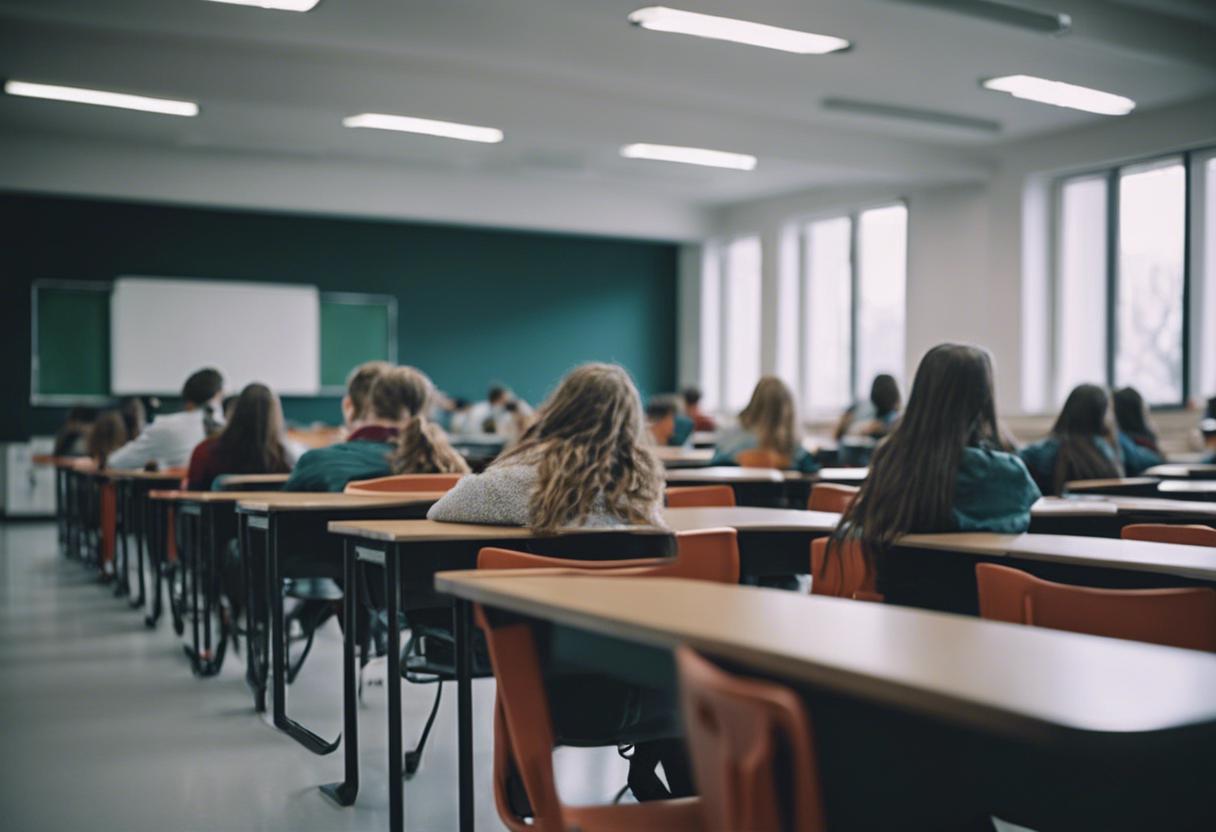In my capacity as an education support worker in further education institutions, as well as a special needs assistant in several secondary mainstream classrooms, I’ve observed the profound effect of technology on our pupils in recent times. Its advantages are significant, but the accompanying hazards are startling.
The Minister for Education’s recent declaration about potentially prohibiting mobile phones in schools definitely piqued my interest.
It’s now clear that the continual exposure of our youngsters to boundless technology can be deemed as one of the most significant trials in their adolescent life. Unless there’s a medical necessity, phones should be absent from schools. However, I suggest that phones simply represent a minor facet of the larger issue.
A growing trend at many second level and further education institutions is the move towards assigning each student a laptop or tablet. These devices come with incredible software that structures homework and lessons, imparting useful administrative skills in the process and making education an enjoyable experience. This is a part of today’s life from which there is no turning back.
When students possess their own devices, schools collaborate with technology partners, ensuring safe usage and continuous support in terms of managing access. Addictive applications and social media sites are made unattainable. However, it seems a lot of young individuals are one step ahead of us.
Undesired and potentially damaging behaviours can arise in a school setting where learners have uninterrupted access to a camera and editing features on their personal devices. It is evident that device distraction is a problem at both secondary and tertiary level.
As someone who often works in the middle of the classroom, frequently towards the back, I have witnessed several screens displaying content unrelated to the lesson at hand. The mastery of quickly switching back to the work page is executed with incredible speed. The ceaseless allure of internet distractions is tiresome to observe.
Sadly, the compulsion to be online and the struggle to resist it is very much a reality in an educational setup, irrespective of whether phones are present or not. A large amount of a student’s energy can be consumed by doing something else on their device in an attempt to avoid getting caught. The challenge of remaining focussed on the assigned work is intensely tested.
Assessing students isn’t what I’m intending – I’m equally culpable, consistently making efforts to rectify this. Very seldom do we adults power down our devices; believing that through mere willpower our pupils can succeed in doing the same is a facile illusion.
Take, for instance, a situation in America in 2020 where a senior member of the school board was accused of surreptiously shopping online during a highly significant education assembly at a secondary institution in Baton Rouge.
Indubitably, several of us find focusing on pertinent tasks challenging when other appealing options are merely a click away. In schools, what qualifies as a permissible distraction over the digital medium? Unassuming activities like browsing Pinterest, solving puzzles and engaging in exploration on Google Earth enjoy an unexpected popularity.
Other readily accessible platforms, such as YouTube, live sports broadcasts, news alerts, or even streaming channels for those crafty enough to evade protective software, compete for attention.
Why am I certain of this? I’ve been fortunate enough to have a unique perspective that educators often cannot maintain consistently, because they are preoccupied with their instructional duties. I’ve had the privilege of interacting closely with some incredibly talented teachers, offering engaging, interactive lessons, and it’s disheartening to see them have to vie for attention with the constant allure of the digital world for their students who skilfully feign attentiveness while otherwise occupied.
I’ve witnessed students engage in a myriad of activities such as online shopping on Amazon, video gaming (on computers devoid of school-installed protective systems), designing graphics or videos as part of an in-joke, and viewing inappropriate content that’s utterly unsuitable for classroom consumption.
It’s not unheard of for students or staff to be photographed, and such images are often shared amongst class members via airdrop; an occurrence within my own relative’s educational institution. I’ve been informed by other teaching aids about merchandise being crafted using photographs captured during virtual learning sessions in 2020. It was during this period that it became commonplace to multi-task digital pursuits while attending classes virtually.
I’ve also observed increasingly uneasy students who have trouble remaining attentive in class, persistently triggering their search bar possibly as a self-check mechanism to ensure connectivity.
I’m uncertain about how to arrive at a resolution, but what we need to steer clear from is the overt vilification of students.
Perhaps it is crucial to enlighten them about the tendency to seek distractions when discomfort or ennui arises. Encourage them to conduct self-studies and keep track of their individual results. It’s important to identify the inclination to procrastinate studying during difficult moments because the allure of the internet and alternative activities can appear more appealing than waiting for such moments to pass.
It’s important for educational institutions to continually monitor the challenges their staff members are encountering and regularly reassess the effectiveness of their current systems. Independent investigators might be called upon to explore different classrooms, analysing the true nature of impulse control in relation to devices; collect empirical evidence and gain an in-depth understanding of the circumstance throughout a diverse range of educational settings.
Consider the wealth of knowledge we could acquire if we allocated resources towards examining the actual usage of student devices within classrooms? Time is of the essence.

